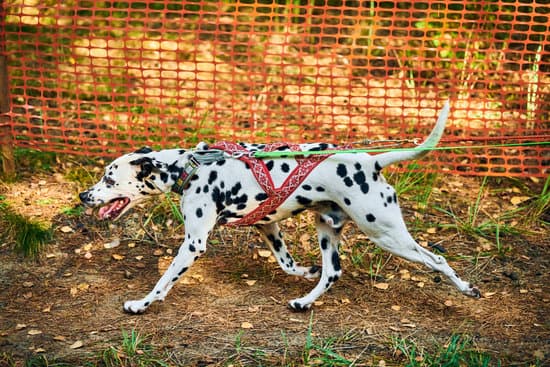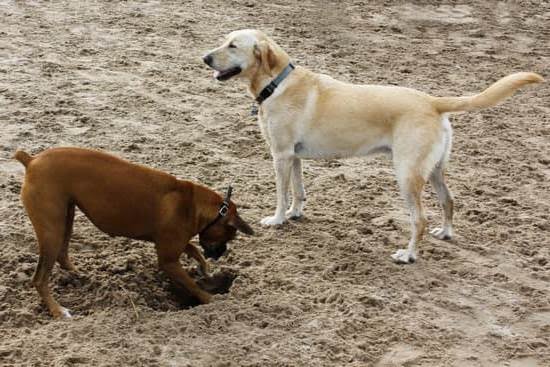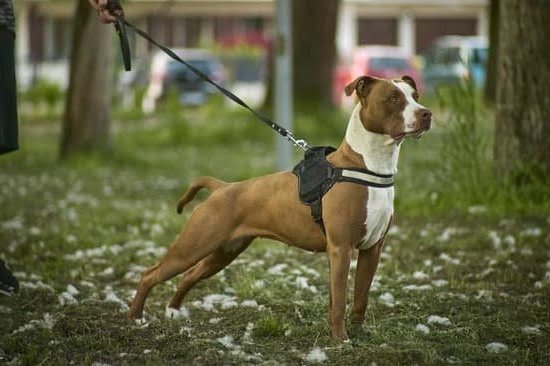Are you wondering how to train any dog to attack? Whether for protection, security, or law enforcement purposes, many dog owners may have considered the idea of training their furry friend to guard and defend. In this article, we will explore the various aspects of training a dog to attack, from understanding the purpose behind it to teaching the necessary commands and ensuring safety for both the dog and its handler.
Before embarking on attack training, it is essential to understand the underlying reasons for wanting to train your dog in this manner. By delving into the purpose behind your decision, you can better assess whether attack training is truly necessary for your specific situation. From personal protection to security measures, there are various motivations for pursuing attack training for your dog.
As you delve into this article, you will also learn about important considerations such as choosing the right breed for attack training, basic obedience training as a foundation, building trust and bonding with your canine companion, legal responsibilities and safety precautions. By gaining comprehensive knowledge on these topics, you will be equipped with the necessary tools to make an informed decision about whether or not to pursue attack training for your dog.
Choosing the Right Breed
When it comes to training a dog to attack, choosing the right breed is crucial. Not all dog breeds are well-suited for attack training, and selecting the wrong breed can lead to disastrous consequences. It is important to remember that not all dogs have the temperament or physical capabilities for attack training.
Temperament and Characteristics
Certain breeds are known for their protective nature and loyalty, making them ideal candidates for attack training. Breeds such as German Shepherds, Belgian Malinois, Rottweilers, and Doberman Pinschers are commonly chosen for this type of training due to their strong protective instincts and courage. These breeds are often used in military and law enforcement for protection and security purposes.
Physical Capabilities
In addition to temperament, physical capabilities also play a significant role in determining which breeds are suitable for attack training. Dogs that are agile, strong, and have a high level of endurance are typically preferred for this type of training. It is essential to select a breed that has the stamina and athleticism required to perform the tasks involved in attack training.
Consideration for Individual Dog’s Personality
While certain breeds may be well-known for their suitability for attack training, it is essential to consider the individual personality of each dog. Not all dogs within a specific breed will have the temperament or disposition necessary for successful attack training. It is important to assess the individual dog’s behavior, confidence level, and drive before embarking on attack training.
Choosing the right breed is just the first step in preparing your dog for attack training; understanding your dog’s temperament and physical capabilities are equally important factors in ensuring success in this specialized area of obedience training.
Basic Obedience Training
Before embarking on specifically training your dog to attack, it is crucial to establish a strong foundation of basic obedience training. This is essential in ensuring that your dog responds to your commands and has the necessary discipline to carry out attack training safely and effectively. Here are some key aspects of basic obedience training that are crucial before moving on to attack training:
1. Socialization: Exposing your dog to different environments, people, and animals in a controlled manner helps them become well-adjusted and less likely to react aggressively out of fear or anxiety.
2. Commands: Teaching your dog basic commands such as sit, stay, come, and heel is essential for communication and control during attack training.
3. Leash Training: Ensuring your dog walks calmly on a leash without pulling or lunging is important for maintaining control during attack training exercises.
Once your dog has mastered these fundamental aspects of obedience training, they will be better prepared for the specific techniques involved in attack training.
4. Positive Reinforcement: Using positive reinforcement such as treats, praise, and toys to reward good behavior during basic obedience training sets the stage for a positive learning experience when transitioning to attack training.
Utilizing these foundational techniques will not only prepare your dog for the specific commands and maneuvers involved in an attack but also strengthen the bond between you and your canine companion.
Building Trust and Bonding
Understanding the Importance of Building Trust
Before delving into attack training, it is crucial to establish a strong bond of trust with your dog. Building a trusting relationship with your dog is essential for both their well-being and yours. Dogs are pack animals, and they thrive on forming close bonds with their human companions. Without trust, the training process can be ineffective and potentially harmful.
Creating a Strong Foundation of Communication
Communication is key to building trust with your dog. Positive reinforcement, consistent rules, and clear signals help create a strong foundation for your relationship. By understanding how to effectively communicate with your dog, you can begin to build the trust necessary for successful attack training.
Spending Quality Time Together
One of the best ways to build trust and bonding with your dog is by spending quality time together. Regular walks, playtime, and positive interactions will strengthen the bond between you and your dog. Developing this connection will not only make your dog more receptive to training but also enhance the overall quality of your relationship.
Establishing a strong relationship built on trust and bonding is vital before embarking on attack training. This foundation will set the stage for successful training sessions and ultimately contribute to a happy and well-adjusted canine companion.
Teaching the Attack Command
Teaching your dog to attack should only be done under specific circumstances, such as working with law enforcement or in a protective capacity. It’s important to understand the purpose behind this training before proceeding. This type of training is not suitable for all dogs and should only be considered if there is a legitimate need for it.
When it comes to choosing the right breed for attack training, certain breeds are better suited for this type of work due to their intelligence, strength, and agility. Breeds like German Shepherds, Belgian Malinois, and Rottweilers are commonly used in police and military work due to their ability to be trained for protection and attack purposes.
Before starting attack training, it’s crucial to ensure that your dog has a solid foundation in basic obedience training. Commands like sit, stay, come, and leave it are essential building blocks that will be important during the process of teaching the attack command.
It’s advisable that you seek professional assistance when considering how to train any dog to attack. Certified trainers have the knowledge and experience needed to properly train a dog for attack work while ensuring safety and legal compliance.
| Point | Details |
|---|---|
| Purpose of Attack Training | Must have genuine need for protection or police work |
| Choosing the Right Breed | German Shepherds, Belgian Malinois, Rottweilers |
| Basic Obedience Training | Foundation for attack training – sit, stay, come, leave it etc. |
Safety Precautions
Training a dog to attack is a serious undertaking that requires careful consideration and safety precautions. Regardless of the reason for wanting to train your dog to attack, it’s essential to prioritize safety for yourself, your dog, and others around you. Here are some important safety precautions to keep in mind during attack training.
First and foremost, it’s crucial to ensure that the training environment is secure and safe. This means using a fenced-in area or a controlled space where your dog cannot accidentally harm someone who is not involved in the training. It’s also important to use proper safety equipment such as a sturdy leash, muzzle, and protective gear for yourself.
When teaching your dog to attack, always start with professional guidance if you’re inexperienced. Seek the help of a qualified dog trainer who has experience in protection or attack training. They can provide valuable insight into safe training methods and help ensure that both you and your dog are protected throughout the process.
It’s also essential to understand the legal implications of training a dog to attack. Depending on where you live, there may be specific laws governing the training of dogs for protection or attack purposes. Be sure to familiarize yourself with these laws and comply with any regulations regarding training, licensing, or liability.
| Safety Precaution | Description |
|---|---|
| Secure Training Environment | Use a fenced-in area or controlled space. |
| Professional Guidance | Seek the help of a qualified dog trainer. |
| Legal Implications | Understand local laws regarding training dogs for protection. |
Legal Considerations
Training a dog to attack is not without legal implications and responsibilities. It is important to understand and comply with the laws that govern this type of training, as well as the ethical considerations involved in teaching a dog to attack on command. Here are some key legal considerations and responsibilities to keep in mind when training your dog for protection:
- Research local laws: Before you begin training your dog to attack, it is crucial to research and understand the laws in your area regarding owning and training guard dogs. Some regions have specific regulations and restrictions for training dogs for protection, so make sure to familiarize yourself with these laws.
- Liability and accountability: When you decide to train your dog to attack, you are assuming a significant level of responsibility. It is essential to be aware of the potential legal liabilities that come with owning a guard dog. If your trained dog were to injure someone or cause harm, you could be legally responsible for any damages.
- Proper signage and notifications: In many jurisdictions, owners of guard dogs are required by law to display warning signs on their property alerting visitors and passersby of the presence of a trained attack dog. Failure to provide adequate warnings can result in legal consequences.
In addition to understanding the legal aspects of training a dog to attack, it is important to consider the ethical implications of this type of training. Owners must ensure that their trained guard dogs are only used in appropriate situations and under strict control.
Owners should also be mindful of their responsibility to protect others from potential harm caused by their trained attack dogs. This includes maintaining secure enclosures or leashes when in public spaces, as well as taking precautions when visitors or unfamiliar individuals are present.
By staying informed about the legal requirements and ethical responsibilities of training a guard dog, owners can ensure that they comply with the law while also prioritizing safety for themselves and others.
Maintenance and Continued Training
After you have successfully trained your dog to attack, it is crucial to continue their training to maintain their sharpness and readiness for action. Consistent training and maintenance are essential not only for the safety of others but also for the well-being of your dog. Here are some tips on how to keep your dog sharp and ready for action after attack training.
One important aspect of maintenance and continued training is regular practice sessions. Just like with any skill, practice makes perfect. Schedule regular training sessions with your dog to reinforce the attack commands and techniques that they have learned. This will help keep their skills sharp and ensure that they do not forget their training.
In addition to regular practice, it is important to provide mental stimulation for your dog. Engage them in activities that challenge their mind and agility, such as agility courses, puzzle toys, or interactive play. Mental exercise is just as important as physical exercise for maintaining a well-trained attack dog.
Lastly, ensure that your dog receives proper physical exercise on a daily basis. Regular exercise not only keeps them physically fit but also helps release excess energy, which can prevent behavioral issues. A well-exercised dog is more likely to remain focused during attack training sessions and less likely to become restless or bored.
By incorporating these strategies into your post-attack-training routine, you can help ensure that your dog remains sharp, ready for action, and a well-behaved companion. Remember that consistent and ongoing training is key to maintaining the skills and behaviors needed for an effective attack-trained dog.
Professional Assistance
In conclusion, training a dog to attack is a serious responsibility that should not be taken lightly. It is important to understand the purpose behind this type of training and carefully consider whether it is truly necessary for your specific situation. Choosing the right breed is crucial, as not all dogs are suited for attack training. Additionally, building a strong foundation of basic obedience and establishing trust and bonding with your dog are essential before beginning attack training.
When teaching the attack command, it is important to follow a step-by-step training process and always prioritize safety precautions to protect yourself and others during training sessions. It is also crucial to be aware of the legal considerations surrounding training a dog to attack, as there are laws and responsibilities that must be understood and followed.
Continued maintenance and training are necessary to keep your dog sharp and ready for action, and seeking professional assistance may be advisable in certain circumstances. Ultimately, the decision to train a dog to attack should not be made lightly, and it is important to carefully weigh the risks and benefits before embarking on this endeavor.
If you choose to pursue attack training for your dog, it’s crucial to do so responsibly and with the utmost care for both your pet’s well-being and the safety of those around you.
Frequently Asked Questions
How Do You Train a Dog to Attack at Home?
Training a dog to attack at home should be approached with caution and only by experienced professionals. It’s important to prioritize the safety of both the dog and its owners, as well as the legal implications of training a dog to attack.
How Do I Get My Dog to Growl on Command?
Teaching a dog to growl on command should start with basic obedience training and a strong bond between the owner and the dog. This can then be built upon using positive reinforcement techniques to associate the growling behavior with a specific command.
How Do I Teach My Dog to Bark at Intruders?
Teaching a dog to bark at intruders requires careful consideration of the potential consequences. It’s important to first focus on proper socialization and obedience training for the dog, as well as reinforcing appropriate guarding behaviors. This should all be done under the guidance of a professional trainer to ensure safety and effectiveness.

Welcome to the blog! I am a professional dog trainer and have been working with dogs for many years. In this blog, I will be discussing various topics related to dog training, including tips, tricks, and advice. I hope you find this information helpful and informative. Thanks for reading!





